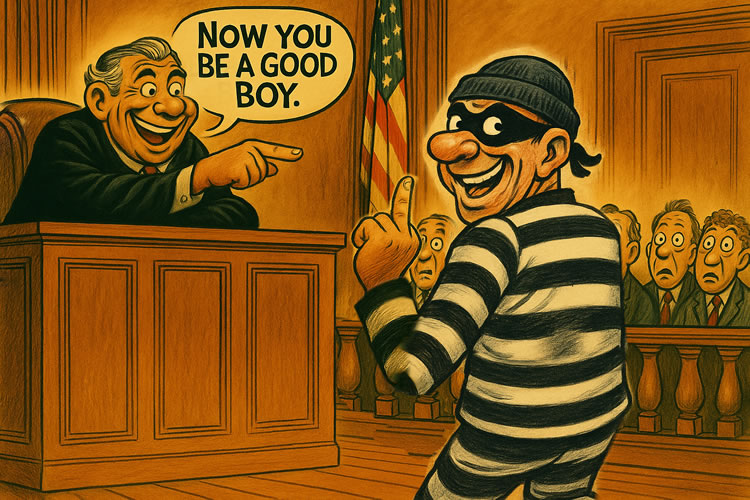When Vermont unveiled its official logo for the state’s 250th anniversary earlier this year, public reaction ranged from puzzled to politely underwhelmed. But behind the minimalist design lies a more troubling story: key visual elements were banned—church steeples, red-white-and-blue, farms, barns, even recognizable Vermont mountains—and there’s no public record showing anyone ever approved those restrictions.
FYIVT set out to find the four remaining logo finalists mentioned in our prior article. We found them—six in total—contained within a design presentation by Place Creative Company. That’s when we noticed something else: a slide titled “What to Embrace / What to Avoid.” It appeared to lay out strict branding boundaries, and it excluded nearly every icon Vermonters associate with their history.
What began as a logo investigation quickly became a broader inquiry into transparency, authorship, and decision-making at the heart of Vermont’s semiquincentennial branding.
“What to Avoid”: The Rules That Shaped the Logo
According to Place Creative’s official listening session summary, the firm developed the embrace/avoid list based on two January 2024 listening sessions and a 112-response online survey.
Here’s what they said to avoid:
- No church steeples
- No identifiable mountains
- No farms or barns
- No specific people (historic or modern)
- No red, white, and blue
What to embrace, according to the same list: shapes, abstractions, symbols, the shape of Vermont, and “Vermont 250th Anniversary”.
But there’s a catch. The listening session report makes clear that while the survey showed respondents favoring Vermont’s geography, farms, forests, and history, the handful of attendees at the closed-door listening sessions voiced concern that such imagery was “overused” or “not inclusive.” It was those curated voices—not the survey majority—that became the guiding influence.

The visual identity guidelines—no steeples, no red-white-blue, no specific people—reflect a broader design philosophy rooted in what’s often called postmodernism. Rather than depict literal history or familiar Vermont icons, the designers favored abstract symbols, emotional tone, and what they described as “universal” themes. The result is a commemorative logo that looks less like Vermont—and more like a corporate rebrand.
What Is Postmodern Design?
Postmodernism in design rejects literal depictions of history, people, or place. Instead, it favors abstraction, emotional ambiguity, and symbolism. Critics say it often strips away local meaning in the name of inclusivity or modernity.
Manufactured Consensus
In video transcripts of the logo presentation, Place Creative staff acknowledge that the “full report and survey results were approved by the marketing committee.” But there is no vote in any minutes confirming that action, and it appears to refer only to a subset of members—likely no more than two to four people.
A key admission appears in the presentation transcript:
“We wanted to avoid symbols that might feel exclusionary to some—like red, white, and blue… instead of grounding it in any one town or one story, we abstracted it to make it universal.”
While 112 Vermonters filled out the official public survey, the final branding rules were based on input from just 24 people—mostly state insiders—participating in two closed-door “listening sessions” led by the design firm itself. Their interpretation, not the public’s, dictated what Vermont’s 250th could and couldn’t look like.

In short, the design team interpreted a narrow subset of stakeholder input as justification to override majority sentiment—and no one in the full Committee appears to have challenged them.
No Record of Approval
FYIVT reviewed every 2024 meeting agenda and set of minutes from the Vermont 250th Committee, its advisory and marketing committees, and relevant working groups. Nowhere in those records is there a vote, motion, or even discussion affirming Place Creative’s embrace/avoid rules as official.
The rules first appear in Place’s February 16, 2024 presentation to the full Committee. That meeting contains no record of debate or objection—only a brief comment from historian Tom Hughes, who expressed concern that the materials “made no mention of the Green Mountain Boys” or other foundational figures. No action was taken on his comment.
From there, the rules simply became canon. When six logo options were presented weeks later, each one had already followed the unvoted restrictions. By March 27, the Committee voted to adopt Concept 1—without ever voting on the rules that eliminated traditional Vermont symbolism from every choice.
Vermont 250 Committee Members
| Committee / Role | Commissioner & Affiliation |
|---|---|
| Administration and Financial Committee | Jim Brangan (Chair); Champlain Valley National Heritage Partnership (Vice Chair) |
| Executive Committee | Laura V. Trieschmann (Chair); State Historic Preservation Officer |
| Marketing and Public Outreach Committee | Martin Mahoney (Chair); Bennington Museum |
| Research and Culture Committee | Susan Evans McClure (Chair); Vermont Arts Council |
| School and Teacher Outreach Committee | Israel Provoncha (Chair); Re-enactor and Historian/Teacher |
| Heather Pelham, Commissioner of the Department of Tourism and Marketing | |
| Paul Deslandes, University of Vermont, Department of History | |
| Tom Hughes, Historian | |
| Christopher Kaufman Ilstrup, Vermont Humanities | |
| Stephen Perkins, Vermont Historical Society | |
| Catherine Delneo, State Librarian | |
| Jonah Spivak, Friends of the Battle Monument; Friends of the Bennington Battlefield | |
| Breanna Sheehan, Vermont Commission on Native American Affairs Representative |
🍁 Make a One-Time Contribution — Stand Up for Accountability in Vermont 🍁
“What? No Barns?”
As part of our reporting, we reached out to committee members, state officials, and stakeholders for comment. Most have not returned voicemails or emails. One exception: the Governor’s office. A spokesperson told FYIVT that Governor Scott’s involvement was limited to creating the commission. He had no review role in the branding process and “has not seen or approved” the logo materials prior to their release.
Meanwhile, everyday Vermonters have taken note of what’s missing.
“What? No barns? That’s not Vermont,” said Perry Thomas, of the now-closed Thomas Dairy, which operated in Rutland from 1920 to 2020.
Veteran journalist Guy Page (Vermont Daily Chronicle) offered a historical perspective:
“It baffles me that church steeples were explicitly excluded from the logo. Some of our most iconic scenes feature steeples—like the Unitarian-Universalist church on Church Street, and the Cambridge United Church in the Alden Bryan painting behind the Governor’s press podium. Vermont now and for the last 250 years has been a state built around small towns, every one of which has a church serving as a community center. And finally, Vermont was the site of intense revivals in the 19th century. The two founders of the Mormon faith, Joseph Smith and Brigham Young, were born here.”
“Not What Vermont Is—But What It Could Become”
Place Creative’s listening session report explains that the design identity was meant to be “not dated, not overly patriotic, not overly literal,” and to reflect “what Vermont could become.” But this future-facing ideology stands in sharp contrast to Vermont’s 250th—an event rooted in honoring the past.
Despite promising to celebrate “shared historical identity,” the final logo suite makes no reference to the Green Mountain Boys, Ethan Allen, Ann Story, small-town identity, or even the state’s natural geography.
This has implications not just for history buffs, but for Vermont’s children.
Studies from the National Institutes of Health (NIH) show that visible, emotional symbols—like historic figures, flags, steeples, and rural landscapes—play a vital role in anchoring civic identity and historical memory in young learners. As The Psychology of Citizenship and Civic Engagement observes, removing those emotionally resonant elements risks making public commemorations feel abstract and hollow—especially for children forming their first impressions of civic life.
The Result: A Process Without a Vote
From the initial listening sessions to the final logo adoption, one thing becomes clear: there was no democratic review of the rules that defined what Vermont’s 250th could look like.
The decisions weren’t voted on. They weren’t challenged. They were simply presented—then adopted by omission.
At its best, Vermont’s 250th could have been a celebration of where we came from, where we are, and where we’re going. But as the branding story shows, we may have skipped the beginning and middle part—without even realizing it.
Here’s looking toward 2076!

Dave Soulia | FYIVT
You can find FYIVT on YouTube | X(Twitter) | Facebook | Parler (@fyivt) | Gab | Instagram
#fyivt #Vermont250 #HistoricIdentity #LogoControversy
Support Us for as Little as $5 – Get In The Fight!!
Make a Big Impact with $25/month—Become a Premium Supporter!
Join the Top Tier of Supporters with $50/month—Become a SUPER Supporter!










Leave a Reply to Paul BCancel reply